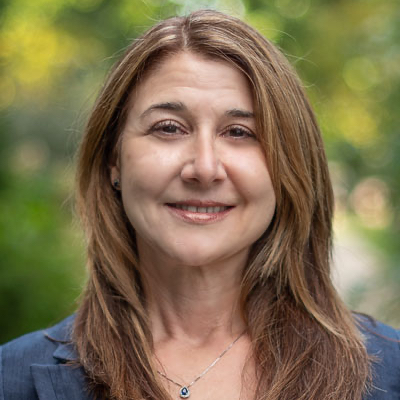Graduate Seminar Series
February 17, 2023
10:00 a.m. ET
7500 Wean Hall
February 17, 2023
10:00 a.m. ET
7500 Wean Hall
Computational methods are useful tools in the investigation of atomic and molecular dynamics and associated mechanisms at surfaces and interfaces. Physics-based classical potentials are a class of computational method that is useful for use in classical atomistic simulations of systems made up of thousands to many billions of atoms. These potentials consist of parameterized functions that capture aspects of atomic and molecular interactions within these material systems.
The focus of this presentation is on the third-generation charge-optimized many body (COMB3) potential. COMB3 was developed to enable an atomic-scale description of systems that include combinations of metallic, ionic, and covalent bonding under the same framework. The framework enables the system to determine the charge state of an atom or ion and manifest the physically appropriate type(s) and strength of local bonding as a function of environment correctly and autonomously. The framework further includes a combination of atomic-specific, bond-specific, bond angle-specific parameters; the former is the same regardless of material, and only new bond-specific and bond-angle-specific parameters are required to extend existing elements to new compounds.
This presentation will provide an overview of the COMB3 potential and illustrate its utility in the study of water-metal surface and nanoparticle interactions with water.
 Prof. Susan B. Sinnott is Professor and Head of the Department of Materials Science and Engineering at The Pennsylvania State University, where she also holds a faculty appointment in the Department of Chemistry. She earned a B.S. in Chemistry from the University of Texas at Austin and a Ph.D. in Physical Chemistry from Iowa State University. She went on to be a National Research Council Postdoctoral Associate at the Naval Research Laboratory where she worked with Dr. Donald Brenner and coworkers on the development of the Reactive Empirical Bond-Order (REBO) potential.
Prof. Susan B. Sinnott is Professor and Head of the Department of Materials Science and Engineering at The Pennsylvania State University, where she also holds a faculty appointment in the Department of Chemistry. She earned a B.S. in Chemistry from the University of Texas at Austin and a Ph.D. in Physical Chemistry from Iowa State University. She went on to be a National Research Council Postdoctoral Associate at the Naval Research Laboratory where she worked with Dr. Donald Brenner and coworkers on the development of the Reactive Empirical Bond-Order (REBO) potential.
Dr. Sinnott began her career in academia in 1995 as an Assistant Professor of Materials Science and Engineering at the University of Kentucky. She moved to the University of Florida in 2000, where she was an Associate Professor, Professor, and Alumni Professor in the Department of Materials Science and Engineering. She worked with Dr. Simon Phillpot and others to develop the Charged-Optimized Bond Order (COMB) potentials and investigated surface and interface chemistry, with an emphasis on heterogeneous systems and defective materials. In 2015 Dr. Sinnott moved to Penn State University.
Dr. Sinnott is the author of 290+ technical publications and is a Fellow of the Materials Research Society, American Physical Society, American Ceramic Society, American Vacuum Society, and of the American Association for the Advancement of Science. She is a past President of the American Vacuum Society and is the Editor-in-Chief of Computational Materials Science. Her accomplishments were recognized in 2022 with a Penn State Faculty Scholar Medal in Physical Sciences, the University of Michigan Department of Materials Science and Engineering Van Vlack Lecturer Award, and the American Vacuum Society Medard W. Welch Award.
June 18 2025
12:30 PM ET
Materials Science and Engineering
"Characterizing Direct Reduction of Iron and Resultant Mechanical Properties" presented by Grant Kenny
Scott Hall 6124
July 8 2025
1:00 PM ET
Materials Science and Engineering
"Uncovering the Driving Force of Thermal-Activated Grain Boundary Migration in Polycrystals," presented by Zipeng Xu
Doherty A310